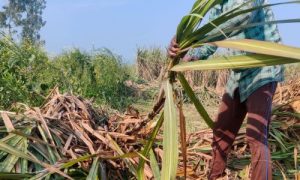India’s sugar industry: Balancing production, policies and global dynamics

India’s sugar sector anticipates a surplus in the 2023-24 season with a record production of 32.135 million tonnes. Despite challenges like global price fluctuations, the industry projects stability in the upcoming season, aiming for 29.75 million tonnes production. Emphasizing sustainability, stakeholders propose leveraging ethanol policies for economic and environmental benefits. Diversification into alternative markets and value-added products is advocated for increased profitability. Strategic policy decisions will shape the industry’s future, balancing economic viability and sustainability.
The sugar sector in India is a vital economic force, impacting the livelihoods of countless farmers and workers. The 2023-24 sugar season demonstrated the industry’s resilience, exceeding domestic and global sugar demands. However, challenges persist from global price fluctuations and water scarcity. This article analyzes production data for 2023-24, forecasts trends for 2024-25, and explores the interplay between sugar production and government ethanol policies.
Bountiful Harvest in 2023-24
The season commenced with an opening stock of 5.57 million tonnes (ISMA). A record production of 32.135 million tonnes is expected (NFCSF), showcasing the industry’s improved performance. Despite significant consumption of 29 million tonnes (DFPD), robust end-of-season stocks of 8.705 million tonnes will remain, signaling prosperous times with a surplus.
Projections for 2024-25
The upcoming season is estimated to begin with a carryover stock of 8.705 million tonnes. Production is likely to decline to 29.75 million tonnes (± 0.25 million tonnes), while consumption is expected to remain stable at 29 million tonnes (± 3-5%). This will result in a stockpile of approximately 9.2+ million tonnes. These projections indicate a continued surplus trend despite a slight production decrease.
Ethanol Policy: Balancing Economics and Sustainability
The Indian Sugar Mills Association (ISMA) and other industry bodies advocate a strategic approach to exports and ethanol to manage the surplus. They propose leveraging the government’s ethanol policy to align economic interests with environmental sustainability. Reassessing the existing ban on sugarcane juice (SCJ) and B-heavy molasses (BHM) ethanol production could curb foreign exchange outflows for crude oil imports and boost the emerging domestic ethanol sector. Additionally, the use of ethanol, a cleaner-burning fuel than fossil fuels (reducing greenhouse gas emissions), aligns with India’s commitment to a greener future.
Global Market Dynamics: Export or Diversify?
Volatility in the global sugar market makes exporting at low prices a precarious venture. Diversifying into alternative markets such as Southeast Asia or Africa can yield better returns. Furthermore, entry into value-added products like refined sugar and sugarcane-derived biofuels offers opportunities for increased profitability. Ethanol production can be particularly transformative, providing a steady income stream and aligning with the global shift toward renewable energy.
Looking Ahead
The future of India’s sugar industry hinges on strategic policy choices that balance economic viability and environmental responsibility. As the nation prepares for the 2024-25 season, it finds itself at a crossroads. The right policies can promote industry growth, contribute to the country’s energy security through domestic ethanol production, and maintain its commitment to sustainable development. By driving innovation, navigating global market dynamics, and promoting a sustainable approach, India’s sugar industry can ensure a prosperous future.
Disclaimer: The views and opinions expressed in the article by Dilip Patil, Managing Director of Samarth SSK Ltd., are solely his own.
Source Link : https://www.chinimandi.com/indias-sugar-industry-balancing-production-policies-and-global-dynamics/
















